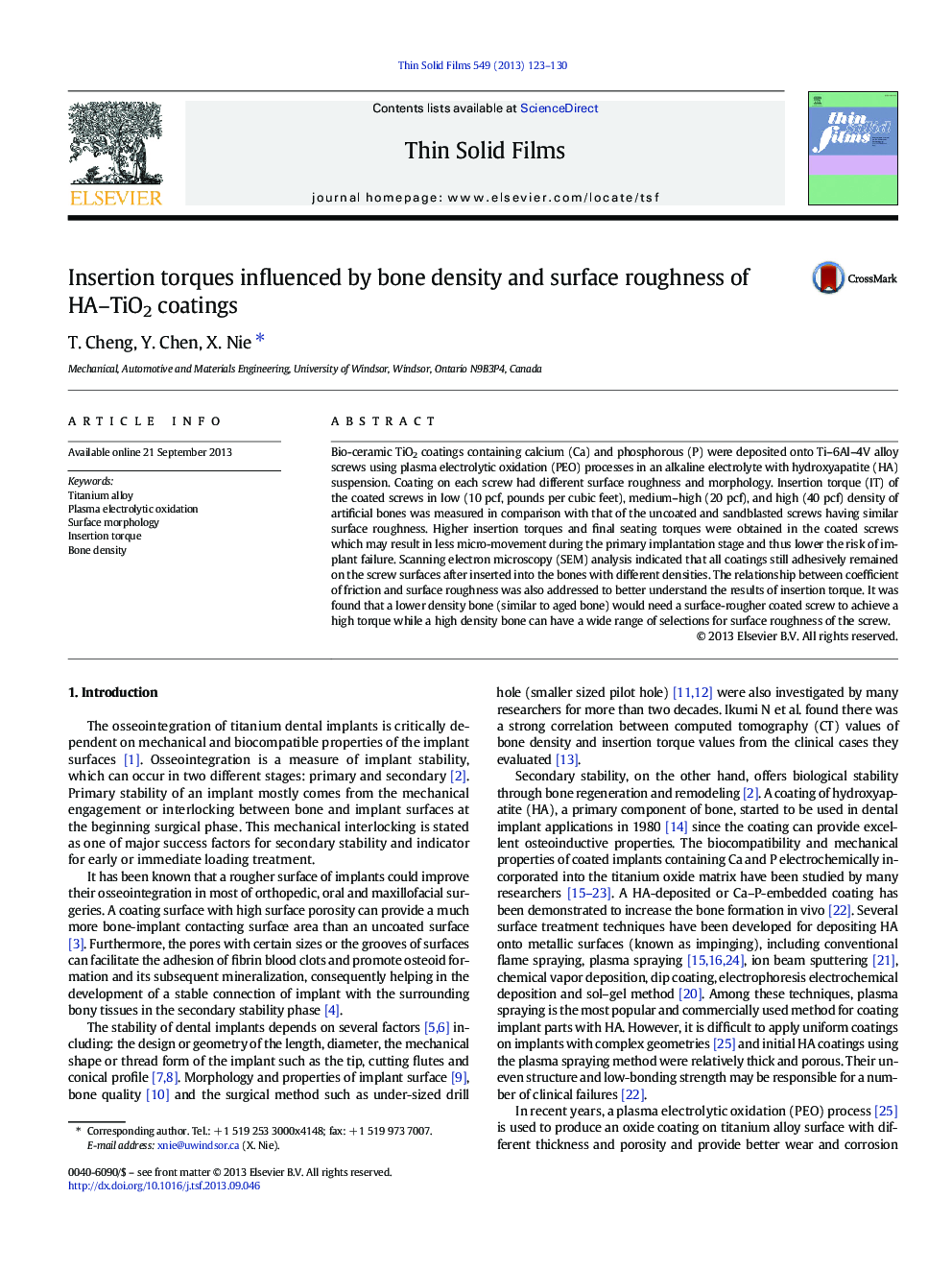| Article ID | Journal | Published Year | Pages | File Type |
|---|---|---|---|---|
| 1665739 | Thin Solid Films | 2013 | 8 Pages |
•The insertion torque of PEO-coated screws is higher than machined and sandblasting implants.•Lower density bone needs a rougher coated implant to increase the insertion torque.•The composite HA–TiO2 coating could benefit dental implants in both primary and secondary stability stages.
Bio-ceramic TiO2 coatings containing calcium (Ca) and phosphorous (P) were deposited onto Ti–6Al–4V alloy screws using plasma electrolytic oxidation (PEO) processes in an alkaline electrolyte with hydroxyapatite (HA) suspension. Coating on each screw had different surface roughness and morphology. Insertion torque (IT) of the coated screws in low (10 pcf, pounds per cubic feet), medium–high (20 pcf), and high (40 pcf) density of artificial bones was measured in comparison with that of the uncoated and sandblasted screws having similar surface roughness. Higher insertion torques and final seating torques were obtained in the coated screws which may result in less micro-movement during the primary implantation stage and thus lower the risk of implant failure. Scanning electron microscopy (SEM) analysis indicated that all coatings still adhesively remained on the screw surfaces after inserted into the bones with different densities. The relationship between coefficient of friction and surface roughness was also addressed to better understand the results of insertion torque. It was found that a lower density bone (similar to aged bone) would need a surface-rougher coated screw to achieve a high torque while a high density bone can have a wide range of selections for surface roughness of the screw.
